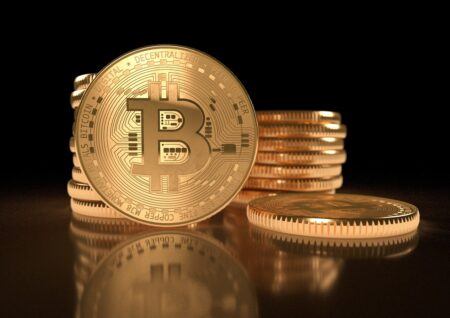Roy Sebag, the Founder and CEO of Goldmoney Inc. (“Goldmoney”), says he is not happy with the “misinformation” contained in Grayscale Investments‘ “poorly conceived” DropGold advertorial campaign. So, on Wednesday (June 5), he published a presentation (in the form of an infographic) that attempted to explain why gold is superior to Bitcoin.
What Does Goldmoney Do?
Goldmoney’s main product is the “Goldmoney Holding” precious metals account. This online account allows clients of Goldmoney to:
- buy, sell, and hold (via insured vaults spread across five countries) physical gold, silver, platinum, and palladium bullion;
- hold or trade up to nine currencies (USD, GBP, EUR, CAD, CHF, JPY NZD, HKD, AUD); and
- redeem bullion bars/coins “at vaults, or in a selection of coins and bars that can be shipped to clients via SchiffGold”.
Sebag’s Qualifications for Talking About This Topic
On May 23, Sebag published a white paper titled “Drop Gold and The Myths We’re Told”. According to this paper, Goldmoney owns Goldmoney.com, which, according to Sebag, “is an online investment platform that safeguards nearly $2 billion of precious metals in 13 physical vaults around the world for nearly 1.5 million clients.”
What makes Sebag different from the usual person in the pro-gold, anti-Bitcoin camp, such as Peter Schiff, is that Sebag has been “actively involved with Bitcoin” since its inception.
Here is how he explains why he is “uniquely positioned to provide a well-reasoned, authoritative counter argument to the debate which has recently ensued as a result of the DropGold campaign”:
“I have owned and invested in Bitcoin since at least 2010, own multiple cryptocurrency patents, and have founded 'BitGold.com,' which was the first blockchain based cryptocurrency-to-physical-Gold platform to reach any meaningful scale. In 2017, I founded Bitfarms, one of the largest proof-of-work cryptocurrency mining operations in North America… I am a leader in both the cryptocurrency and precious metal industries…”
The Goldmoney CEO’s Criticisms of the DropGold Campaign
To start with, the Sebag says that “this campaign will not age well, and that it runs the risk of ultimately undermining the ideals and objectives of the cryptocurrency community.”
After reviewing all the materials/statements presented by the DropGold campaign, Sebag found that the “argument” presented by the campaign “can be distilled down to two pillars of thought which include several easily falsifiable forms of misinformation put forward by Grayscale as statements of fact to induce the purchase of its securities”.
In short, he is unhappy that the public is being told to drop gold and buy Bitcoin because:
- Gold is an analog metal that is heavy, is archaic, and has no real utility.
- Bitcoin is digital/virtual, is weightless, is the future, is borderless, and has utility.
The infographic-style presentation that Sebag published yesterday focuses on the following three “myths”, which he says are all false:
- “Bitcoin has no weight”: Sebag claims that Bitcoin is “actually physically heavier” than gold in the sense that you need 1.69 Kilograms of physical hardware to mine one bitcoin;
- “Bitcoin takes no space”: Sebag says that you can fit all of the gold in the world into a cube of approximately 20.7 meters on each side whereas the Bitcoin “physical infrastructure” requires 49 times the “volumetric space” needed for storing gold; and
- “Gold has no utility”: According to Sebag, the very computer chips that are used to mine Bitcoin need to use gold as a conductor, whereas to mine gold, you don’t need Bitcoin (“nothing more than a pan or a pickaxe” is needed for extracting gold).
The World Gold Council Is Also Unhappy With the DropGold Campaign
As CryptoGlobe reported on May 2, Adam Perlaky, Manager of Investment Research at the World Gold Council, hit back at the DropGold campaign even earlier than Sebag.
In a blog post titled “Cryptocurrencies are no replacement for gold”, he argued that gold is better than crypto for the following reasons: “less volatile”; “a more liquid market”; “trades in an established regulatory framework”; “has a well understood role in an investment portfolio”; “has little overlap with cryptocurrencies on many sources of demand and supply”; and “is a safe-haven investment”.
Featured Image Credit: Photo via Pexels.com









